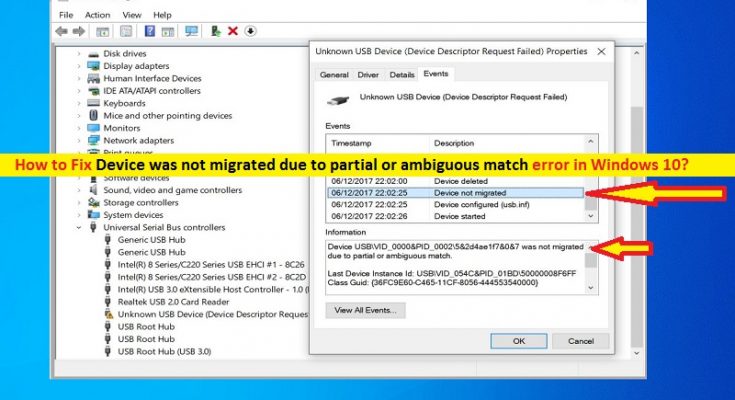What is ‘Device was not migrated due to partial or ambiguous match’ error in Windows 10?
If you are experiencing ‘Device was not migrated due to partial or ambiguous match’ error in ‘Device Manager’ in Windows 10 after or while upgrading Windows 10 OS, then you are in right place for the solution. Here, you will be guided with easy steps/methods to resolve the error. Let’s starts the discussion.
‘Device was not migrated due to partial or ambiguous match’ error: It is common Windows problem usually occurred after Windows 10 upgrade or while updating Windows 10 computer. Microsoft releases regular Windows update in order to fix bugs or issues in Windows current version and improve performances by adding several new features and enhancements. Updating Windows OS also migrates all Windows drivers systematically to ensure the computer continues working.
However, several users reported that they faced ‘Device was not migrated due to partial or ambiguous match’ error after Windows 10 upgrade. This issue indicates Windows computer is hard to perform certain functions relating to device driver showing this error. There could be several reasons behind this error including corruption in system files or disk system image, important Windows OS are damaged and need repair, and other reasons.
This error can also be appeared due to corrupted/outdated or incompatible drivers you have installed in computer. Drivers play important roles in communication between your hard device and operating system installed in your computer. Make sure drivers are properly installed and are up-to-date to latest and compatible driver version if you want to use your device without any errors. Another possible reason behind this error can be conflict between two Operating System software installed in your computer if any. If you have installed two operating system in computer, then it might possible to get this error.
This error can also be occurred due to unsupported peripheral device attached into your computer or issue with hardware device causes this type of error. You can fix hardware issue or remove problematic peripheral device in order to fix the issue. Let’s go for the solution.
How to fix Device was not migrated due to partial or ambiguous match error in Windows 10?
Method 1: Fix ‘Device was not migrated due to partial or ambiguous match’ error with ‘PC Repair Tool’
‘PC Repair Tool’ is easy & quick way to find and fix BSOD errors, EXE errors, problems with programs/applications, malware or viruses issues, system files or registry issues, and other system issues with just few clicks. You can get this tool through button/link below.
Method 2: Disconnect problematic peripheral device and try plugging-in into different port
This error occurred with USB device attached into computer due to issue with USB port. So, you can disconnect USB device and connect it to another USB port computer and check if it works. You can also check if USB device connection is not problematic and try resolving USB device connection issue.
Method 3: Check and Update the device driver showing ‘Device was not migrated due to partial or ambiguous match’ error
Updating drivers for the device showing this error can resolve the problem.
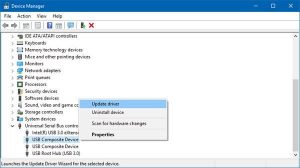
Step 1: Press ‘Windows + X’ keys on keyboard and select ‘Device Manager’
Step 2: In ‘Device Manager’, find and right-click on the driver which is not working properly, and select ‘Properties’
Step 3: In ‘Properties’ window, click on ‘Events’ tab, and check if it shows ‘Device was not migrated due to partial or ambiguous match’ error in ‘Events’ section
Step 4: Now, right-click on the device driver showing this error, and select ‘Update Driver’. Or in ‘Properties’ window of the problematic device, click on ‘Driver’ tab and click on ‘Update Driver’ button to update the driver.
Step 5: Follow on-screen instructions to finish update process. Once updated, restart your computer and check if the error is resolved.
Download or reinstall Windows 10 drivers update [Automatically]
You can also try to download or update all Windows 10 drivers with ‘Automatic Driver Update Tool’. This software will automatically find the latest updates for all Windows drivers and install them into computer.
Method 4: Disable and re-enable problematic device driver
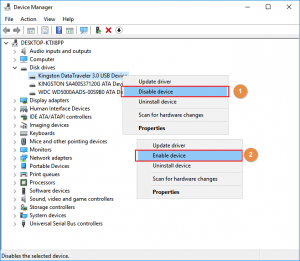
You can also try to fix the issue by disabling the problematic device driver in Device Manager and then re-enable it.
Step 1: Open ‘Device Manager’ using above method
Step 2: Find and right-click on device driver showing ‘Device was not migrated due to partial or ambiguous match’ error, and select ‘Disable’.
Step 3: After few seconds, right-click on the device driver again and select ‘Enable’. Once done, please check if the error is resolved.
Method 5: Download and install Device drivers in Compatibility Mode
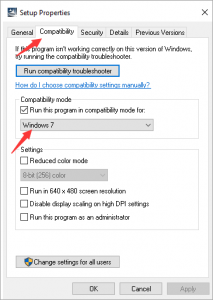
You can also try to resolve the issue by installing drivers in compatibility mode. Let’s try.
Step 1: Open your browser and visit official website of device manufacturer that was causing the error, and download the latest & compatible driver in computer
Step 2: Once downloaded, find and right-click on executable of downloaded driver file, and select ‘Properties’
Step 3: In ‘Properties’ window, click on ‘Compatibility’ tab, tick ‘Run this program in compatibility mode for’ checkbox, and select current Windows OS version or before from dropdown
Step 4: Finally, click on ‘Apply’ and ‘OK’ button to save the changes. Once done, double-click on driver setup file and follow on-screen instructions to finish installation, and check if the error is resolved.
Method 6: Run SFC Scan Tool in Windows 10
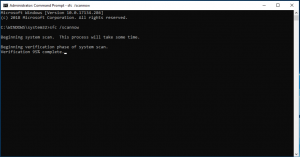
Step 1: Press ‘Windows + X’ keys on keyboard and select ‘Command Prompt as Administrator’
Step 2: Type ‘sfc /scannow’ command and hit ‘Enter’ key to execute
Step 3: Once executed, restart your computer and check if the error is resolved.
Method 7: Reinstall specific driver
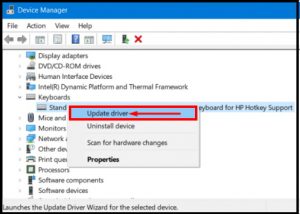
You can manually check the problematic driver in Device Manager and then reinstall the driver that is causing the error or showing ‘Yellow Exclamation mark’ on it.
Step 1: Open ‘Device Manager’ and find and right-click on the driver showing ‘Yellow Mark’ on it, and select ‘Uninstall’
Step 2: Follow on-screen instructions to finish uninstall and after that, restart your computer. Restarting computer will reinstall the necessary drivers in computer.
Step 3: After restart, please check if the error is resolved.
Method 8: Perform BIOS Settings reset
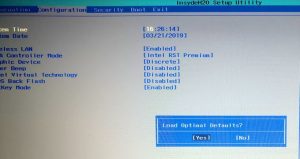
This error can be occurred due to outdated/corrupted BIOS in your computer. You can perform BIOS settings reset in order to fix the issue. To do so, you need to enter into BIOS mode by pressing ‘F4’, ‘F2’ or ‘DEL’ keys on keyboard (This key combination may vary according to your PC’s motherboard variant). Once you are inside BIOS mode, find ‘Reset’ option and follow on-screen instructions to finish reset. However, you should follow your PC’s motherboard instructions manual to perform BIOS settings reset.
Method 9: Reset Windows 10

If the issue is still persist, then you can try to fix the issue by performing Windows 10 reset.
Step 1: Open ‘Settings’ App Windows 10 and go to ‘Update & Security > Recovery > Reset This PC’ and click on ‘Get Started’ button
Step 2: Select ‘Keep my files’ or ‘Remove Everything’ option and follow on-screen instructions to finish resetting process
Step 3: Once done, restart your computer and check if the error is resolved.
Conclusion
I am sure this post helped you on How to fix Device was not migrated due to partial or ambiguous match error in Windows 10 with several easy steps/methods. You can read & follow our instructions to do so. That’s all. For any suggestions or queries, please write on comment box below.
